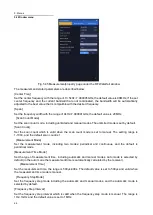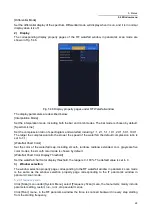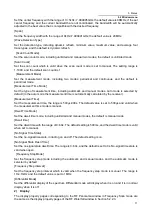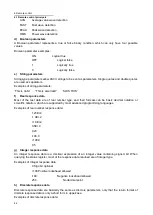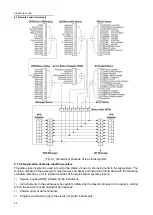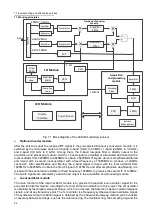
6 Remote control
6.1 Remote control principals
81
Different parameter types have one or more corresponding response data types. During a query, a data
type will be returned for a numerical parameter, and the response data is precise and strict, known as
"Speak precisely"
For example, when querying the automatic switching status of the IF panorama step value
(CALCulate:IFPan:STEP:AUTO?), the response data returned when querying is always 1, regardless of
which of the above four setting commands was previously sent.
a) Numerical parameters
Numerical parameters can be used in both instrument commands and common commands. A numeric
parameter receives all the usual decimal counting methods, including signs, decimals, and scientific
notation. If a device only accepts a specified numeric type, such as an integer, it will automatically round
up the received numeric parameters.
Examples of numeric parameters:
0
No decimal point
100
Optional decimal point
1.23
Signed bit
4.56e<space>3 Index mark e can be followed by a space
-7.89E-01
The exponent token e which can be upper or lower case
+256
Positive lookahead allowed
5
Decimal points can be used first
b) Extended numerical parameters
Most measurements related to instrument commands use extended numeric parameters to specify
physical quantities. Extended numerical parameters receive all numeric parameters and additional
special values. All the extended numeric parameters receive MAXimum and MINimum as parameter
values. Whether other special values, such as UP and DOWN, are received is determined by the
instrument's resolution capability, and all valid parameters are listed in its SCPI command table.
Note: The extended value parameter does not apply to general purpose commands or STATus
subsystem commands.
Examples of extended numeric parameters:
101
Numeric parameter
1.2GHz
GHz can be used as an index (E009)
200MHz
MHz can be used as an index (E006)
-100mV
-100 mV
10DEG
10 degrees
MAXimum
Maximum effective setting
MINimum
Minimum effective setting
UP
Increase by a step
DOWN
Decrease by a step
c) Discrete parameters
When the number of parameter values to be set are finite, they are identified by discrete parameters.
Discrete parameters use mnemonics to represent each valid setting. Like remote control command
mnemonics, discrete parameter mnemonics have two formats, long and short, and allow for mixture of
upper and lower cases.
In the following examples, discrete parameters and commands are used together.
[SENSe:]DETector[:FUNCtion] AVG|FAST|PEAK|RMS
Содержание 3943B
Страница 2: ...3943B Monitoring Receiver User s Manual Ceyear Technologies Co Ltd...
Страница 4: ......


